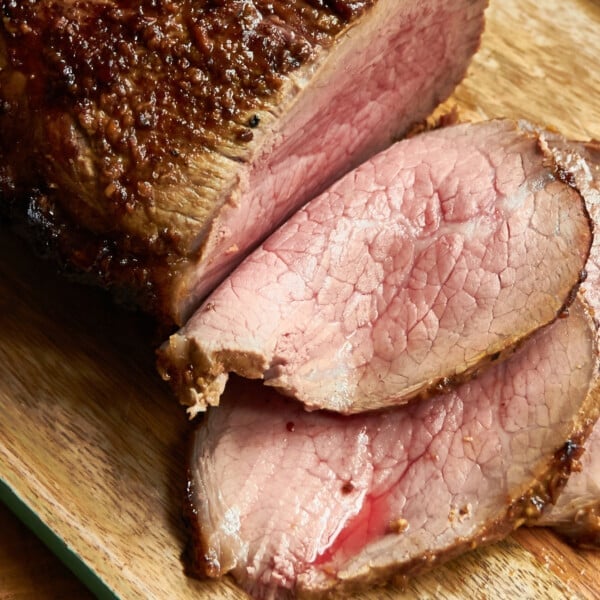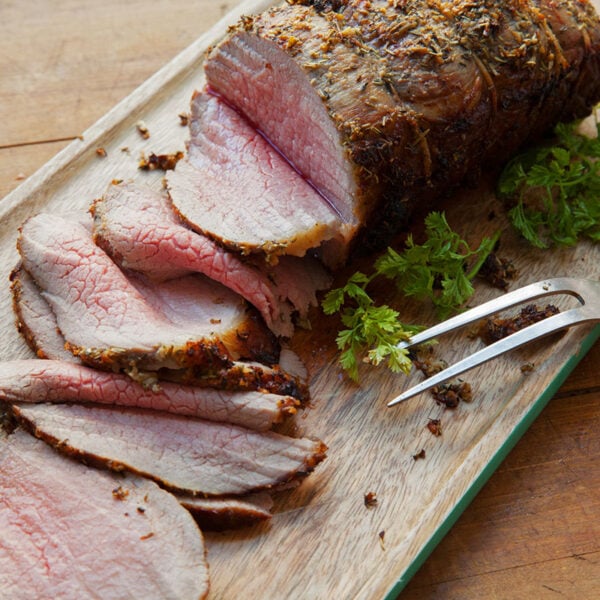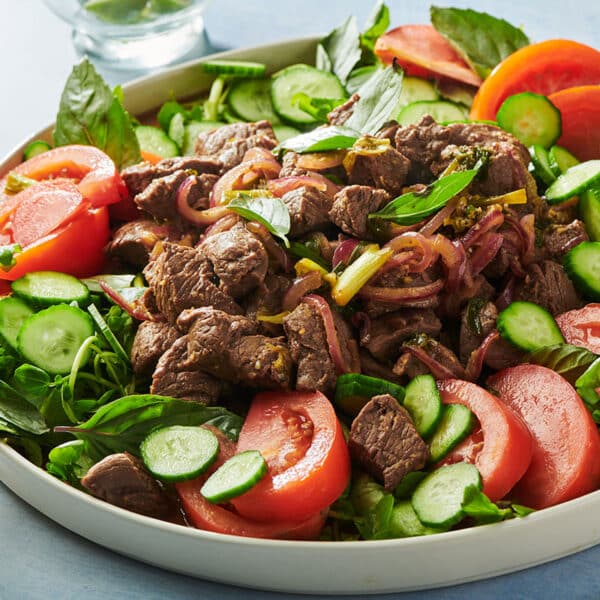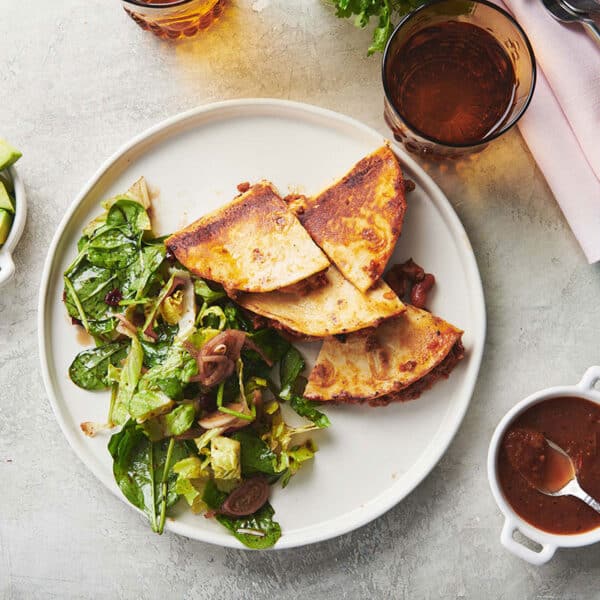Beef Gravy
Updated Mar 04, 2025
This post may contain affiliate links. Please read our disclosure policy.
You can use this easy, old-fashioned brown gravy recipe for all kinds of cuts of beef, from filet mignon to petite filet to roast beef to London Broil.
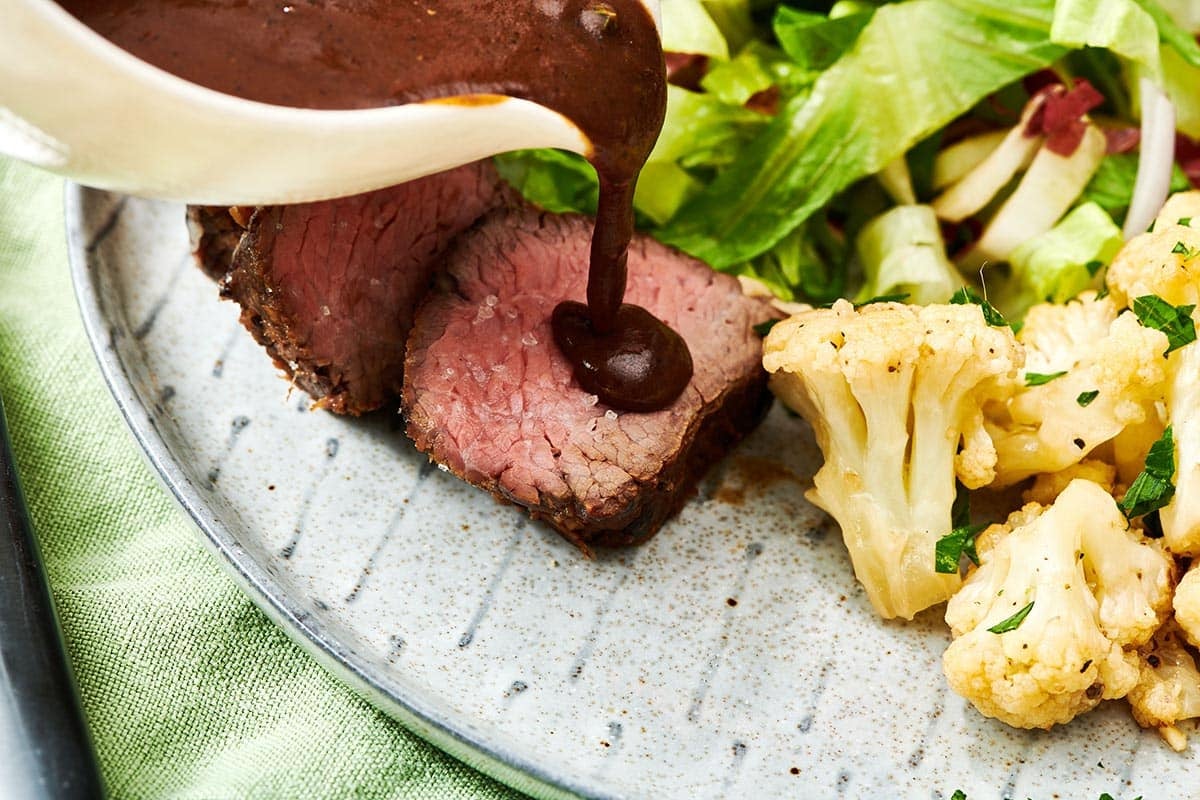
So you made a filet, a beef tenderloin, a pot roast, or a roast eye of beef — what a great treat! The folks in your house must be so happy. But you want to take all of that flavor and notch it up a level. This is that rich, smooth gravy you want to pour over beef — and hopefully, the mashed potatoes to go with it!
Those browned bits in the pan left from searing and cooking the beef are called the fond (used to make pan sauce, too) and will become the base for an immensely flavorful beef gravy. Adding flour to the pan and toasting it before adding the broth results in a nice thick gravy.
This beef gravy goes so well with meat served alongside Roasted Lemon Brussels Sprouts, Parmesan Mashed Potatoes, or Maple Roasted Butternut Squash. For a crazy treat, try Mashed Potato Pancakes with beefy gravy.
By signing up, you agree to our Privacy Policy.
You can use this old-fashioned “brown” gravy technique for all kinds of cuts of beef, from filet mignon to roast beef to London Broil. Also, think of this method when you are searing and cooking other meat as well, like pork chops, chicken, and so on. Or, for a change of pace, try white gravy or turkey gravy!
What's In This Post?

Beef Gravy: This smooth, rich pan sauce gravy is a quick way to enhance any seared or even roasted beef dish with just a few pantry ingredients.
Ingredients
- Unsalted butter – For a silky texture.
- Red onions
- Garlic
- All-purpose flour – To thicken the sauce.
- Red wine – This is optional but will add such depth of flavor.
- Beef or chicken stock
- Sherry vinegar – Sherry vinegar is a very balanced vinegar. It isn’t too sweet or too acidic, so it won’t be overpowering.
How to Make Beef Gravy
- Leave the pan drippings in the pan: Once you have pan-seared and finished cooking your beef, remove the meat and tent it with foil to keep warm, and then don‘t clean that pan! Leave 3 tablespoons of the pan drippings in the pan, and drain off any extra oil.
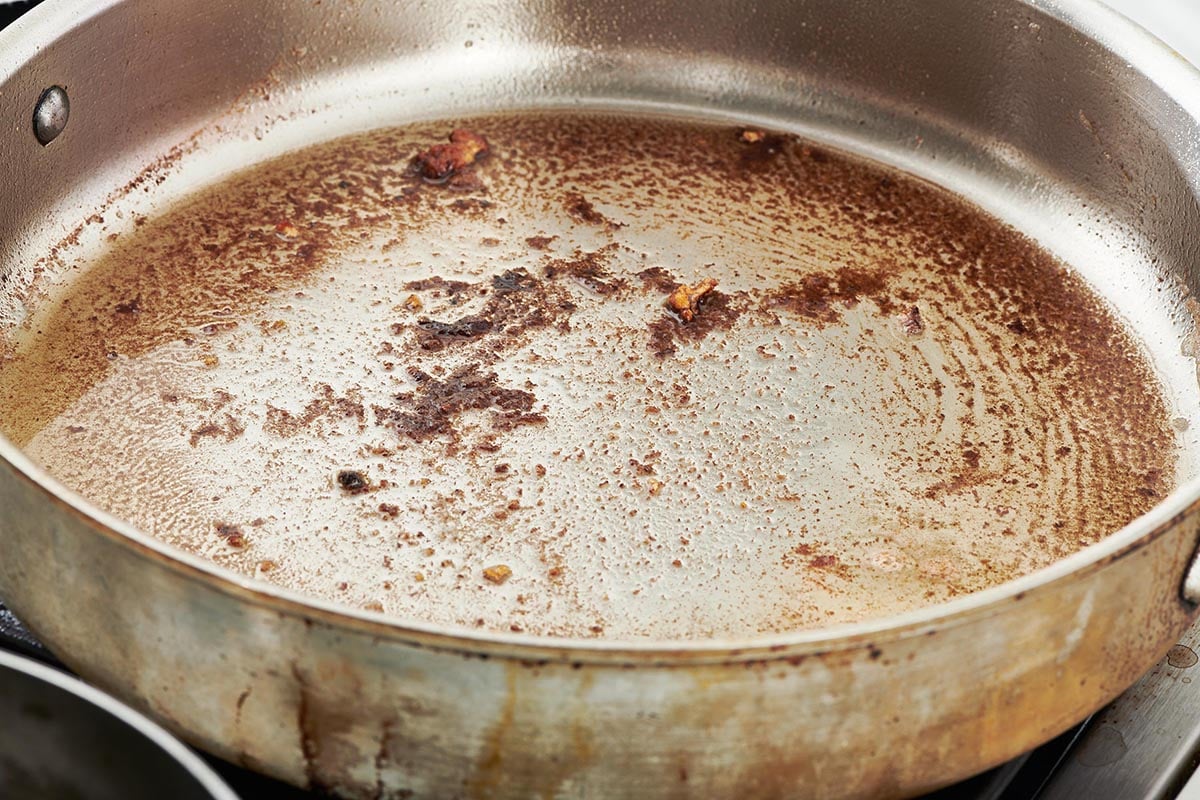
- Sauté the aromatics: Sauté the garlic and onions in the melted butter for 3 minutes, until the vegetables have softened slightly.

- Sprinkle over the flour: Whisk until the flour is incorporated into the base and toasted.
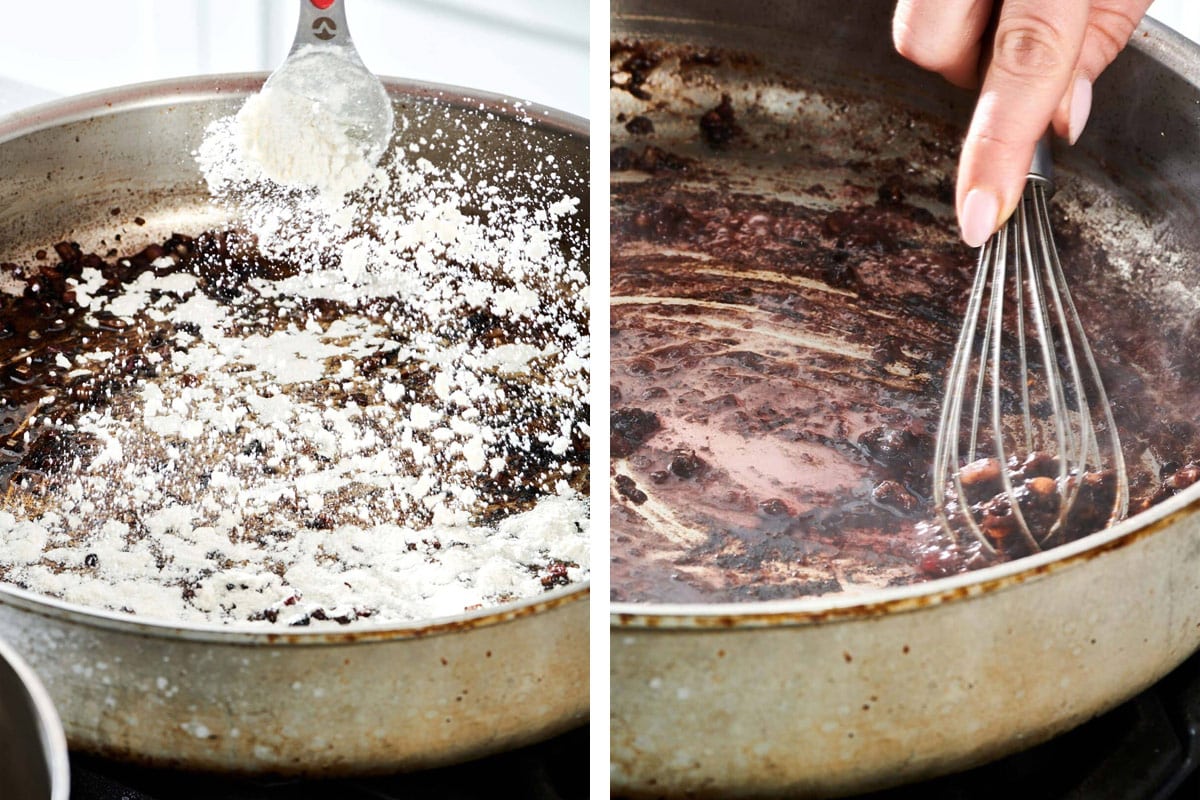
- Add the liquid: Pour in the red wine, if using, and whisk until it is mostly evaporated. Pour in the broth, stir, and scrape until the browned bits release from the bottom of the pan. Season and add the sherry vinegar, whisking until the mixture is smooth.
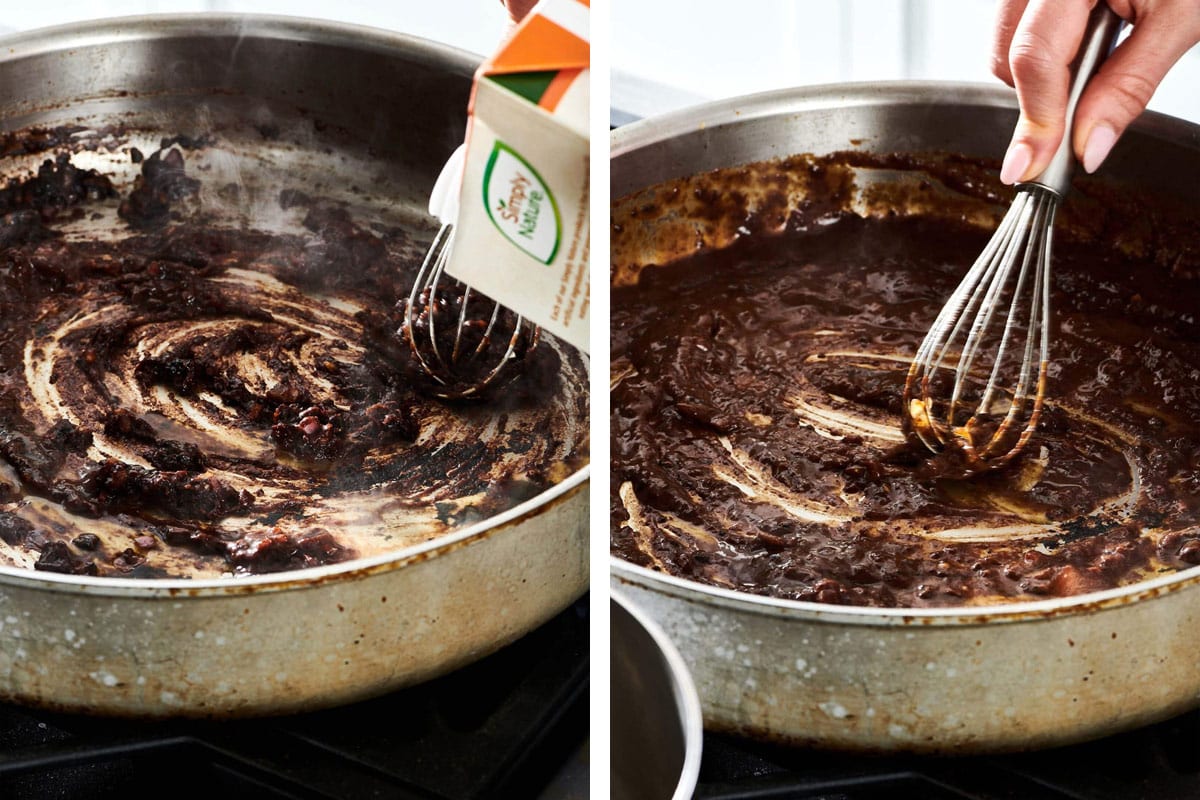
- Strain the gravy.
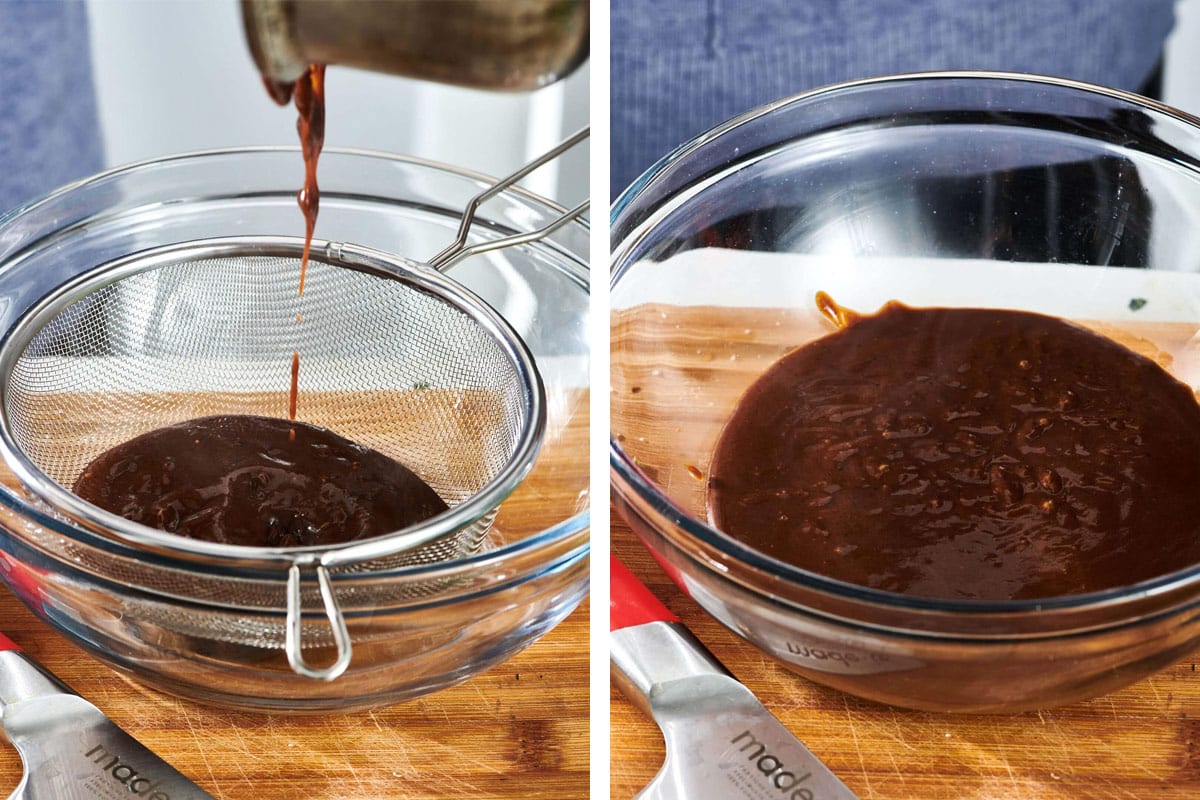
- Serve: You can offer the gravy warm on the side or drizzle the sauce over the meat.
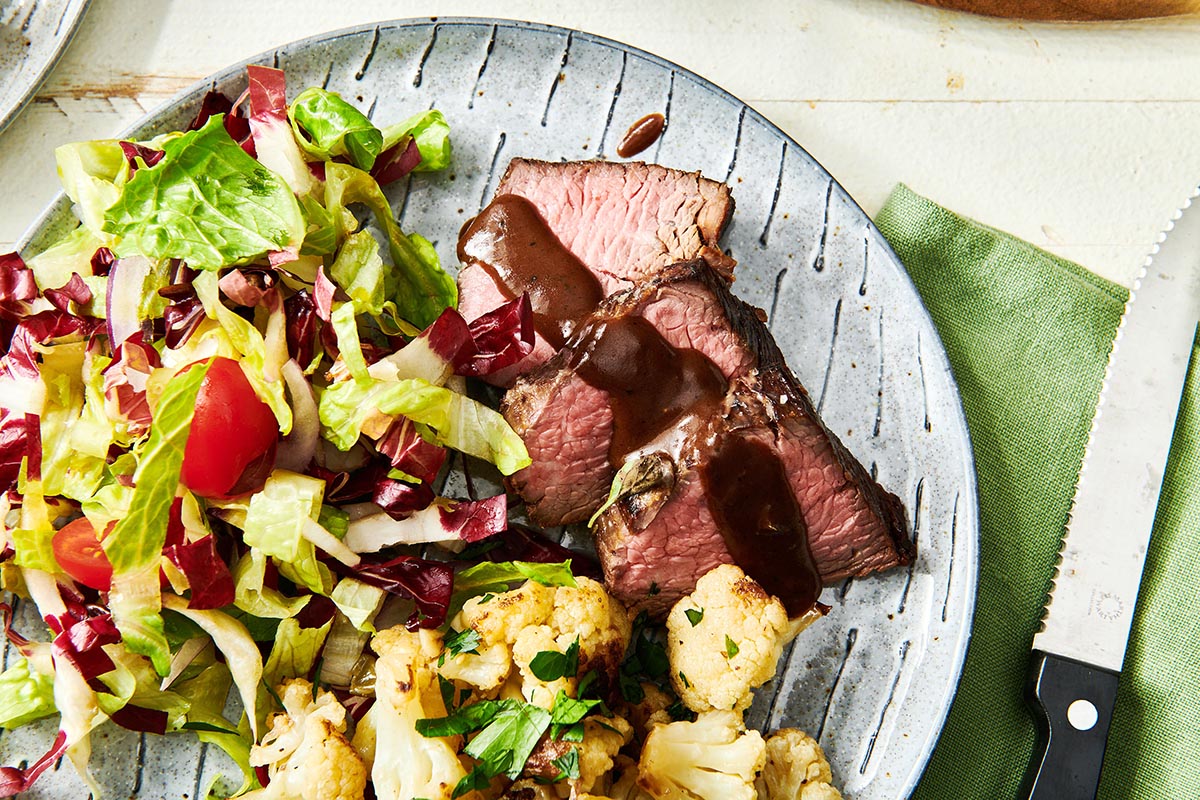
How to Make Gravy With No Lumps
There are a few pro tips for making perfectly smooth beef gravy!
- Sprinkle the flour into the pan instead of dumping it all in.
- Make sure there are pan drippings or some fat in the pan, and whisk frequently so that the flour toasts and blends in smoothly. This will make a roux, which is the base for your gravy. Allow the flour to toast for a bit before adding the liquid.
- If you have a lot of fat in the pan, pour all of the drippings into a measuring cup and let sit at room temperature or in the fridge for 10 minutes or so. The fat will rise to the top, and you can pour some of it off so that you have the concentrated drippings left but not so much fat as to make the gravy greasy or oily.
- Add the liquid (broth, wine, water, or stock) gradually and whisk constantly as you pour.
- Strain the gravy through a mesh strainer, pressing it through, discarding any solids left behind in the strainer.
FAQs
Beef gravy is usually made from the pan drippings created when cooking a cut of beef on the stove or in the oven. Nearly any gravy base is made with a thickener (like flour or cornstarch) and the pan drippings, and then that is thinned out and smoothed with the addition of the beef broth or stock. Add some onions, garlic, salt, and pepper for seasoning along the way.
I like flour versus cornstarch, but you can use cornstarch if you have guests who are gluten-free. The flour is toasted in the drippings in a pan over the heat, which removes the raw flour taste. This is called a roux and forms the base of the gravy. Then, the broth is added while on the stove until it reaches the thickness you like after allowing it to simmer for a bit. If your gravy seems to be getting too thick, you can add a bit more hot beef broth or water to reach the desired consistency.
Both brown gravy and au jus include the drippings from cooking the beef. Au jus also usually includes some beef stock or broth. However, au jus doesn’t contain a thickener like flour or cornstarch and is much thinner in consistency.
Using pan drippings enriches gravy, but to make beef gravy taste even better, you can also add things like wine, roasted garlic paste, and fresh herbs to the gravy for additional flavor. A dash of Worcestershire sauce, soy sauce, or miso paste adds more depth and umami, too. Also, try adding a splash of vinegar, like sherry vinegar, to brighten up the flavor. Some minced fresh herbs like rosemary or thyme with make the gravy more aromatic.
Reheating Leftover Gravy
When you store gravy, it will thicken further in the refrigerator. Reheat it in a small pot over low heat, stirring frequently. You probably want to add at least a few tablespoons of broth or water to the pot as it warms.
Gravy can also be reheated in the microwave, but stir it every 30 seconds so it heats evenly. You may want to lay a folded paper towel over the top of the gravy in a microwave-safe bowl to prevent splattering.
What to Serve With Beef Gravy
This gravy pan sauce is a quick way to dress up any seared or even roasted beef dish with just a few pantry ingredients. And who isn’t excited about gravy? Don’t forget the mashed potatoes if you want to make your people super happy.

What to Serve With Beef and Gravy
Potatoes! This gravy goes perfectly with a heap of mashed potatoes (or any kind of potatoes or grains). It’s also great with other savory sides.
- Herbed Mashed Potatoes
- Roasted Potatoes
- Garlic Mashed Sweet Potatoes
- Baked Mashed Potatoes
- Braised Cauliflower
- Pesto Crescent Rolls
- Slow Cooker Maple-Dijon Brussels Sprouts
Pin this now to find it later
Pin It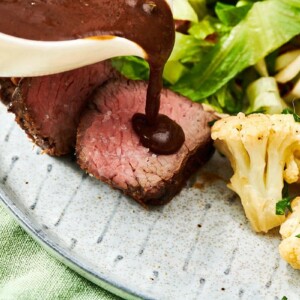
Beef Gravy
Ingredients
- 2 tablespoons unsalted butter
- 2 tablespoons minced red onion
- 1 tablespoon minced garlic
- 2 tablespoons all-purpose flour
- ¼ cup red wine
- 1 cup beef or chicken stock
- Kosher salt and freshly ground black pepper (to taste)
- 3 tablespoons sherry vinegar
Instructions
- Once you have pan-seared and/or finished cooking your filets in the oven, remove the meat, tent it with foil to keep warm, and don‘t clean that pan! Leave 3 tablespoons of the pan drippings in the pan, and drain off any extra oil.
- Return the pan to medium heat and melt the butter. Add the garlic and onions, and sauté, stirring frequently for 3 minutes, until the vegetables have softened slightly. Sprinkle over the flour and whisk until the flour is incorporated into the base and toasted, about 2 minutes. Add the red wine and whisk for a minute until it is mostly evaporated. Pour in the broth, and stir and scrape until the browned bits release from the bottom of the pan. Add salt and pepper and the sherry vinegar. Whisk until smooth.
- Pour the sauce into a mesh strainer and press the sauce through. Discard any solids left on the strainer.
- Serve the sauce warm on the side, or drizzle the sauce over the meat.
Notes
- Sprinkle the flour into the pan instead of dumping it all in.
- Make sure there are pan drippings or some fat in the pan, and make sure you whisk frequently so that the flour toasts and blends in smoothly. This will make a roux, which is the base for your gravy. Allow the flour to toast for a bit before adding the liquid.
- Add the liquid (broth, wine, water, stock) gradually and whisk constantly as you pour.
- Strain the gravy through a mesh strainer, pressing it through, and discarding any solids left behind in the strainer.

